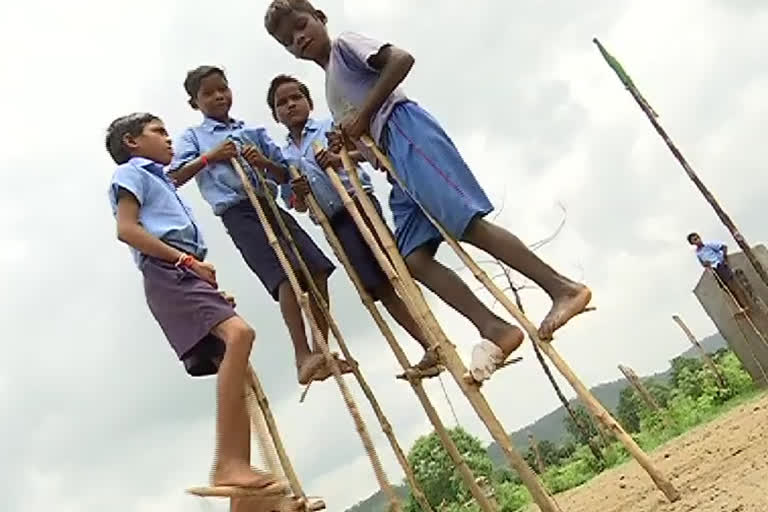Adilabad (Telangana): In today's age of bustling cities with increased vehicular traffic, the tribal community in Telangana's Adilabad district is still not completely averse to their sole conventional mode of transport - walking, albeit sometimes on stilts!
For the tribal community residing deep amidst the forests of Adilabad, stilt-walking started off as a necessity in the monsoon months, but has now become an integral part of their culture.
During earlier days, when solid roads were non-existent, the mud tracks used by the community would invariably transform themselves into rivers of slushy mud during monsoons, making walking on them almost impossible.
To combat this, the community came up with the idea of walking on bamboo stilts. Doing so also protected children with delicate immune systems from diseases.
However, with metallic roads making their way even into the most interior regions, the practice has now been rendered useless. But, the community still hangs on to the practice as it has become an integral part of their culture, and has also assumed religious significance.
Penduru Maruti, a member of the community explained that the practice is now carried out only by children. "Children in cities have bicycles, these stilts are our bikes. We had fun with them, now it is our children's turn," he said.
The practice is now a part of tribal festivities held between Asadam Amavasya and Shravana Amavasya (Two new moons in the months of the traditional calendar). The bamboo stilts are named 'Koda', which translates to 'horse' in the Gondi language, similar to 'ghoda' in Hindi.
A day after Sravana Amavasya, villagers procure fresh bamboo sticks from the forest, which are then worshipped in a special ceremony. However, the sticks are then set aside, with strict instructions, barring anyone from touching them until the next year, when they can be used by children.
The design of the stilts is very simple - a smaller stick is fastened perpendicularly to the longer bamboo stick, serving as the foot support. Children then use the hand-held stilts to walk around, sometimes even breaking into a fun jig!
Though a remnant from its under-developed past where there were no roads, the tribal community still takes a lot of pride in the practice of stilt-walking, attaching both religious and environmental significance to it.



